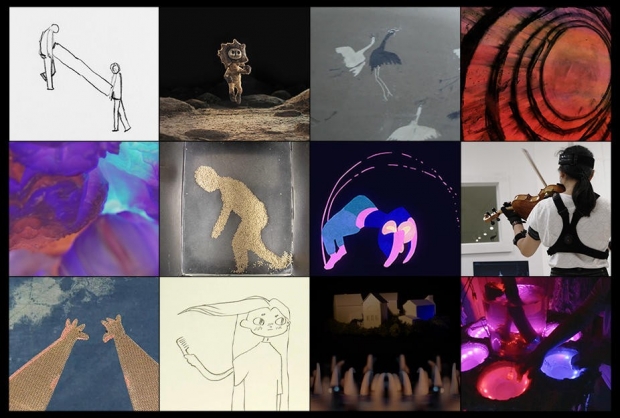The Maxwell/Hanrahan Foundation will fund two fellows at new center based in the Film / Animation / Video department; Cheryl Henson will support a visiting puppeteer.
Rhode Island School of Design (RISD) has announced that two generous donors will support new endeavors to advance its recently inaugurated Movement Lab, a cross-disciplinary center for the creative study of movement. The Maxwell/Hanrahan Foundation will fund two fellows, and RISD parent Cheryl Henson, whose late father was internationally celebrated puppeteer Jim Henson, will provide support for a visiting puppeteer to teach at the school.
The Movement Lab arose from RISD’s unique approach to animation education. Based in the Film/Animation/Video (FAV) department, it is a multidisciplinary research space for students, faculty and visiting artists. Beginning in January 2024, students in all disciplines may enroll in the three new winter-session courses developed by the Movement Lab fellows and the visiting puppeteer.
Fellows will focus on their independent creative research projects, which may include animation; filmmaking; immersive arts; performance; game arts; dance; puppetry; robotics; or kinetic sculpture, among others. The five-year rotating visiting puppeteer will help students develop a foundational understanding of puppetry, a multicultural art form with roots in Asia, Europe and Africa that engages a range of disciplines, including performance, sculpture, textiles, and illustration.
The Maxwell/Hanrahan Foundation, co-founded by RISD alumni Delle Maxwell and Pat Hanrahan, supports individual scientists, teachers, conservationists and creators “whose diverse perspectives enable us to discover new things about ourselves and our world.” The foundation’s gift, in combination with funds from Hanrahan’s Turing Award winnings, will support two annual teaching fellowships in the Movement Lab for post-graduate artists and scholars. Collectively, these funds will prioritize diversifying the next generation of artists and designers and help to increase equitable curricula at the school.
Cheryl Henson, an ardent advocate for the art of puppetry in America, is the president of the Jim Henson Foundation, which supports innovative contemporary puppet theater. Jim Henson received an Athena Award from RISD in 1982 for his creation of The Muppets and a posthumous honorary Doctor of Fine Arts in 1991. His daughter Heather Henson earned a BFA from RISD in 1995.
In addition to undergraduate courses, Movement Lab programming will support postgraduate work that explores movement at the intersection of language, identity, cultures, ecosystems and/or peoples. The new programming will address FAV’s ongoing efforts to advance diversity, equity and inclusion in art, design and computing, on campus and beyond. Future research might explore such questions as: How are gestures incorporated, even unconsciously, by social groups? Do people adapt the rhythms of breathing when they are together, or mimic each other’s gestures? How does visualized movement affect the bodies of people who are unable to move?
“Movement crosses every boundary and provides unique insights across cultures, races, ethnicities, species, continents, landforms and even simply between two people trying to understand each other,” says FAV Department Head Amy Kravitz, adding that she hopes the fellows will invent previously unimagined fields of movement study.
Cheryl Henson stated, “Movement and gesture are integral to puppetry. Bringing an inanimate object to life is achieved by imitating the subtle movements that we recognize as those of a living being. The effects of breath and gravity on a body, enhanced by the myriad emotions conveyed through gesture, tell us who a character is and why we should care. It is exciting to think about what RISD students might create in this playful art form during winter-session courses led by a professional puppeteer.”
“Movement is a language that connects everything and everyone in conscious and unconscious ways,” says Associate Professor Max Porter. “The fact that we move is universal. However, how and why we move is specific to each individual.”








